Note: To celebrate the 20th anniversary of the Hubble Space Telescope, for ten days, Universe Today will feature highlights from two year slices of the life of the Hubble, focusing on its achievements as an astronomical observatory. Today’s article looks at the period April 2002 to April 2004.
As I mentioned yesterday, Hubble servicing mission 3B in March 2002 saw the successful replacement of the Faint Object Camera with the Advanced Camera for Surveys (ACS). Surveys, surveys, and yet more surveys; astronomers are forever spending huge amounts of time doing surveys. And from its name you’d not be wrong to guess that a great deal of ACS’ time has been devoted to surveys. Perhaps the best known – to astronomers anyway – is GOODS, which stands for the Great Observatories Origins Deep Survey. It was kicked off in late 2001, and is still on-going; in addition to hundreds of hours of observations by the most powerful ground-based facilities and Hubble’s ACS, an awful lot of time on Spitzer, Chandra, XMM-Newton, and Herschel has been devoted to it (I’ll cover GOODS in more detail later; for now, here’s a link to the project’s website).
Shortly after the ACS went into operation, the world was treated to a sample of stunning images from it. My favorite is ‘the Mice’ (NGC 2676); what’s yours?
Oh, and that galaxy collision?
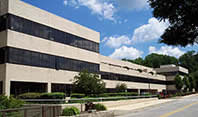
We imagine that the Space Telescope Science Institute (STScI) is devoted exclusively to the Hubble, both its scientific work and its public outreach and education. Sometimes however the work goes a bit beyond that, and combines both science and outreach.
A good example of this is the video at the top of this article; Dr. Frank Summers, an STScI astrophysicist, took research simulation data from Case Western Reserve University’s Chris Mihos and Harvard University’s Lars Hernqvist and visualized it using the same software that Hollywood uses to produce blockbuster visual effects. Special care was taken so that what appears onscreen accurately reflects what was calculated in the simulation.
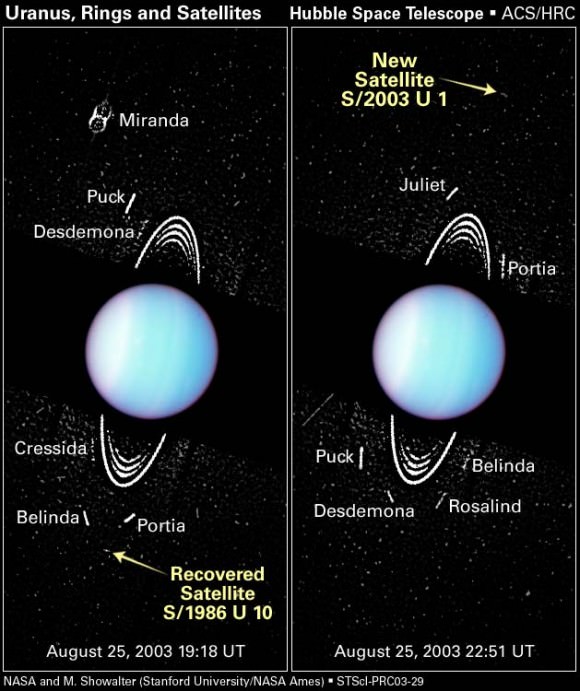
How good is ACS? Judge for yourself; the image of Uranus’ moons above is from ACS, compare it to the WFPC2 one, in Hubble’s 20 Years: Now We Are Six article (Universe Today’s story on this is Hubble Finds Two Small Moons Around Uranus).
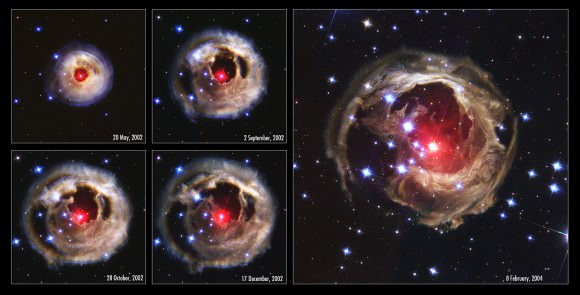
Hubble’s superb resolution, close to the theoretical best for its new instruments (and old ones, using COSTAR), gives us spectacularly detailed images (and oodles of data) for such transient events as the flare-up on the star V838 Mon, lighting up the surrounding gas and dust and giving us much better understanding of the interstellar medium.
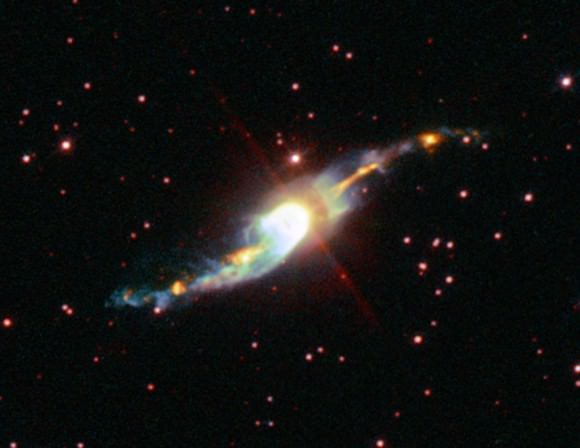
As you’ve no doubt already concluded, the Hubble helped our understanding of planetary nebulae greatly; but, as is always the case in an active field of science, new observations sometimes bring new questions. Such is the case of Henize 3-1475, the ‘garden sprinkler’ nebula (Puzzling Jets Seen Blasting Out from a Nebula is Universe Today’s story on this).
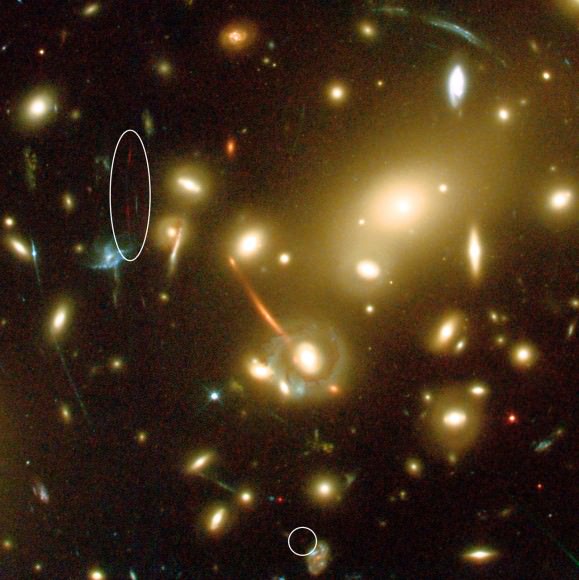
Some gravitational lenses produce images which can be analyzed using observations from ground-based telescopes. Generally, however, the Hubble produced by far the best data … and stunning images (Abell would have been astonished; he died in 1983, only a few years after the first astronomical lens was discovered, the ‘twin QSO’; it looks nothing like this).
Tomorrow: 2004 and 2005.
Previous articles:
Hubble’s 20th: At Least as Good as Any Human Photographer
Hubble’s 10th Birthday Gift: Measurement of the Hubble Constant
Hubble at 8: So Many Discoveries, So Quickly
Hubble’s 20 Years: Now We Are Six
Hubble’s 20 Years: Time for 20/20 Vision
Hubble: It Was Twenty Years Ago Today
Sources: HubbleSite, European Homepage for the NASA/ESA Hubble Space Telescope, The SAO/NASA Astrophysics Data System, GOODS


As a caveat, the image of M31 on Milky Way collision expected in 2 billion years is portrayed on a rotating frame. The back ground stars (galaxies) can be seen rotating around. When I first started watching this I was first puzzled by how the apparent angular momentum of these galaxies appeared to be changing. So bear that in mind, the axes of these galaxies do not rotate before the collision.
The gravitational lens image illustrate how the magnified image is transverse to the direction to the source. This is in keeping with the holographic prinicple.
LC
Yes; there’s more details than on the Hubblesite website, Galaxy Collsion by Summers, Mihos, and Hernquist.
The rotation is a visualization technique (it’s easier to see what’s going where if you rotate the viewing direction into the sim).
Sorry guys – same error that occurred in an earlier Hubble article I think. ACS replaced the Faint Object Camera, not WFPC2 in 2002. WFPC2 was replaced by WFPC3 in the last servicing mission.
Thanks stevec35; fixed.